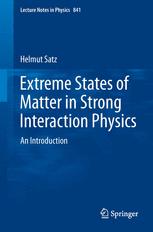

Most ebook files are in PDF format, so you can easily read them using various software such as Foxit Reader or directly on the Google Chrome browser.
Some ebook files are released by publishers in other formats such as .awz, .mobi, .epub, .fb2, etc. You may need to install specific software to read these formats on mobile/PC, such as Calibre.
Please read the tutorial at this link: https://ebookbell.com/faq
We offer FREE conversion to the popular formats you request; however, this may take some time. Therefore, right after payment, please email us, and we will try to provide the service as quickly as possible.
For some exceptional file formats or broken links (if any), please refrain from opening any disputes. Instead, email us first, and we will try to assist within a maximum of 6 hours.
EbookBell Team

4.7
66 reviewsThe thermodynamics of strongly interacting matter has become a profound and challenging area of modern physics, both in theory and in experiment. Statistical quantum chromodynamics, through analytical as well as numerical studies, provides the main theoretical tool, while in experiment, high-energy nuclear collisions are the key for extensive laboratory investigations. The field therefore straddles statistical, particle and nuclear physics, both conceptually and in the methods of investigation used.
This course-tested primer addresses above all the many young scientists starting their scientific research in this field, providing them with a general, self-contained introduction that emphasizes in particular the basic concepts and ideas, with the aim of explaining why we do what we do.
To achieve this goal, the present text concentrates mainly on equilibrium thermodynamics: first, the fundamental ideas of strong interaction thermodynamics are introduced and then the main concepts and methods used in the study of the physics of complex systems are summarized. Subsequently, simplified phenomenological pictures, leading to critical behavior in hadronic matter and to hadron-quark phase transitions are introduced, followed by elements of finite-temperature lattice QCD leading to the important results obtained in computer simulation studies of the lattice approach. Next, the relation of the resulting critical behavior to symmetry breaking/restoration in QCD is clarified before the text turns to the study of the QCD phase diagram. The presentation of bulk equilibrium thermodynamics is completed by studying the properties of the quark-gluon plasma as new state of strongly interacting matter. The final chapters of the book are devoted to more specific topics which arise when nuclear collisions are considered as a tool for the experimental study of QCD thermodynamics.